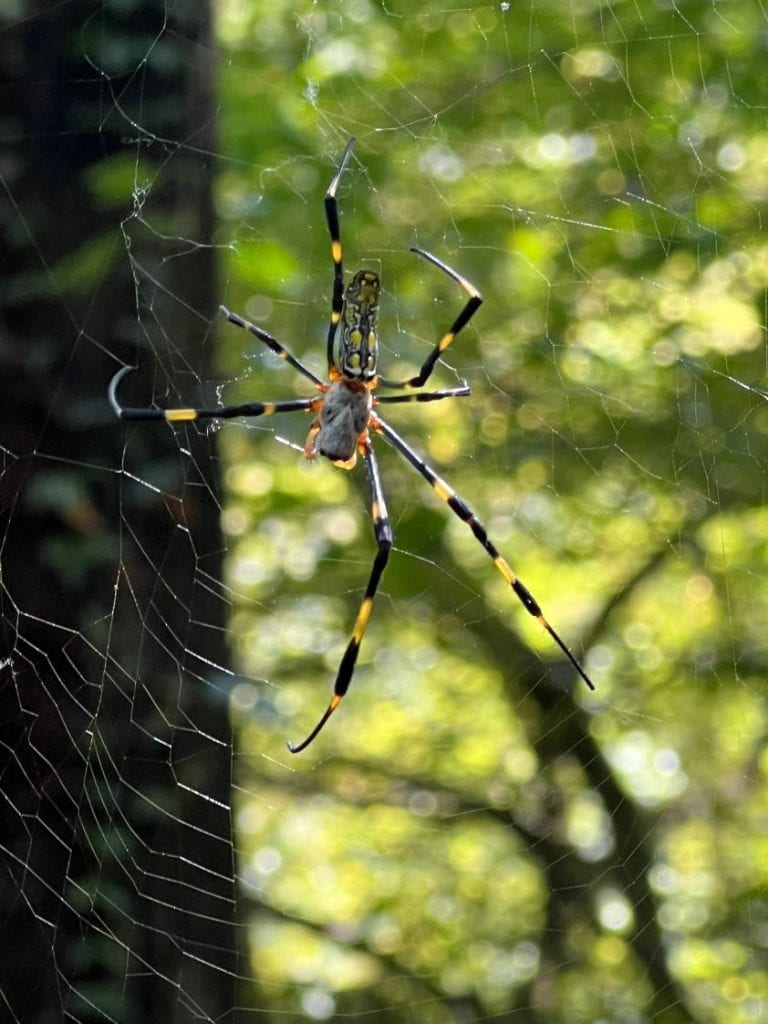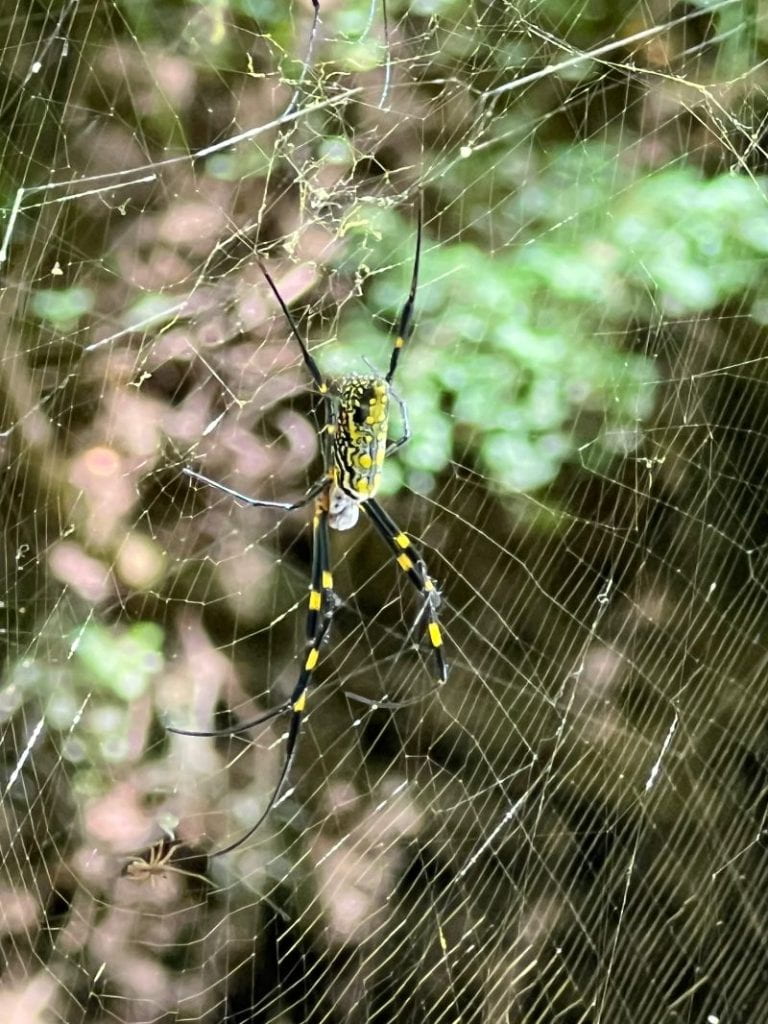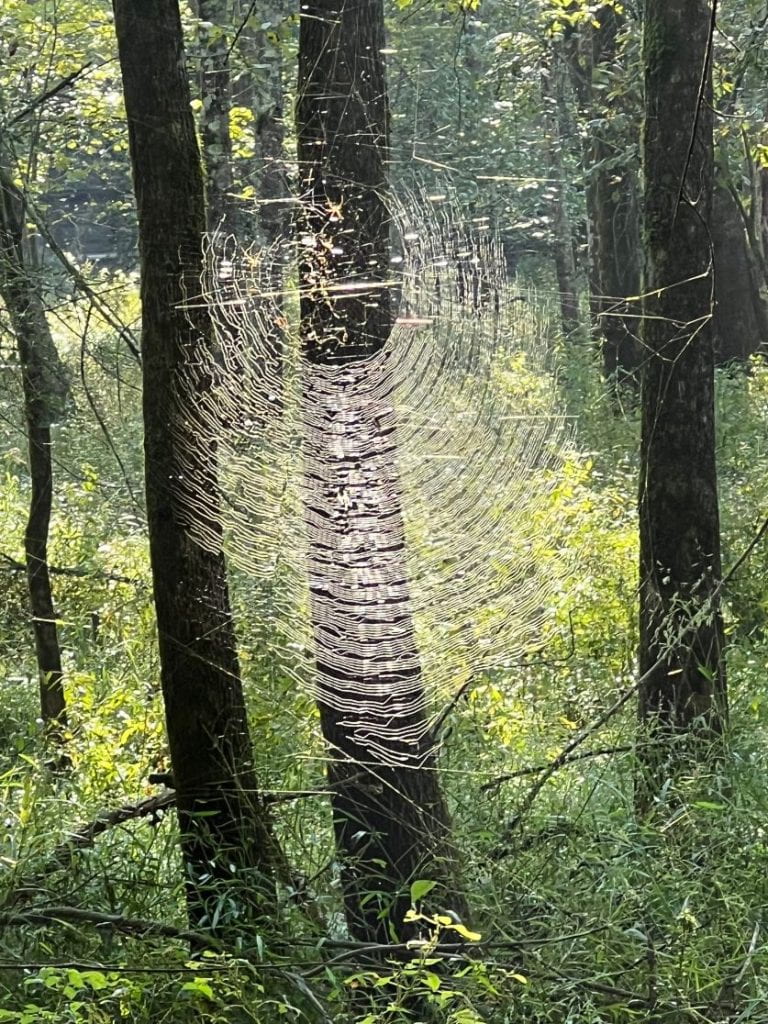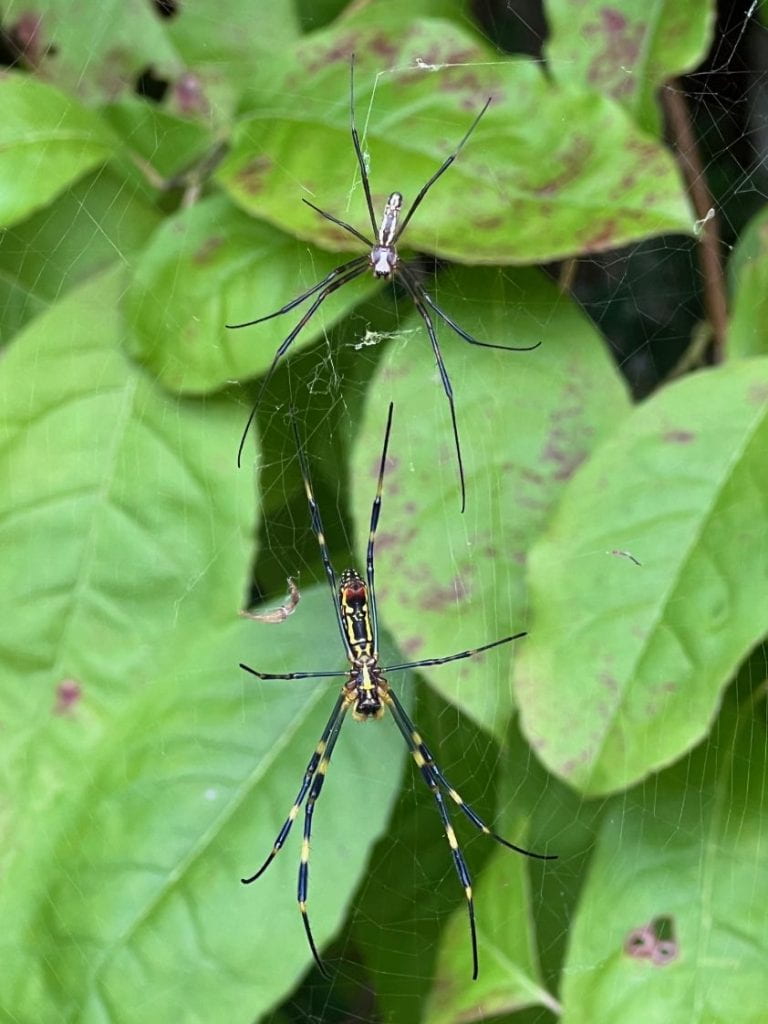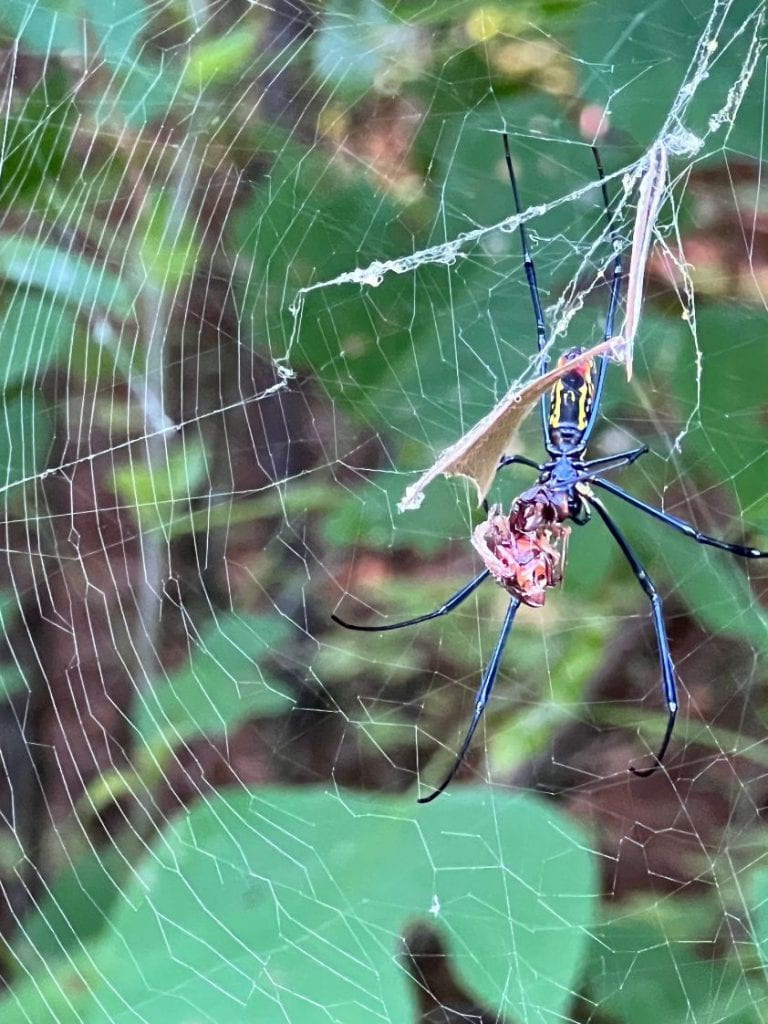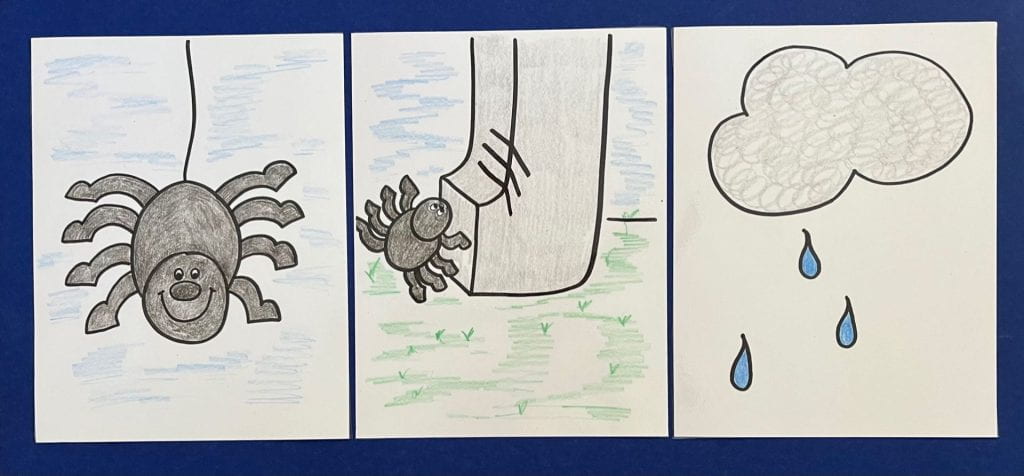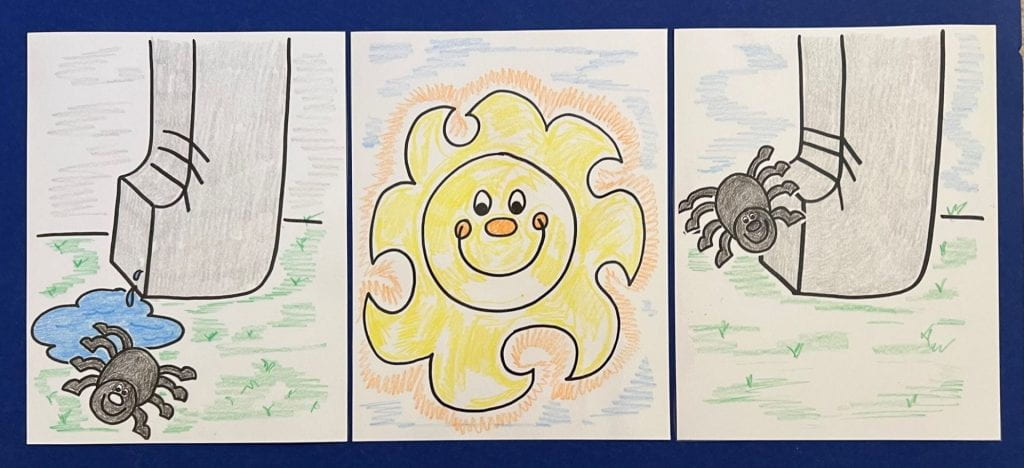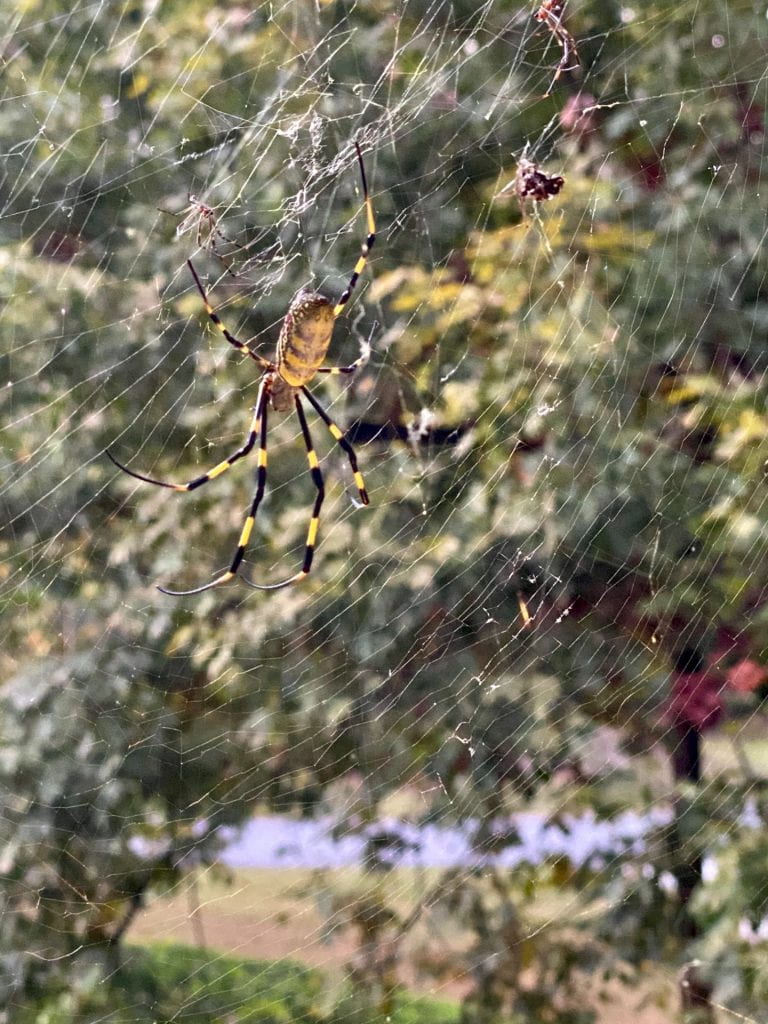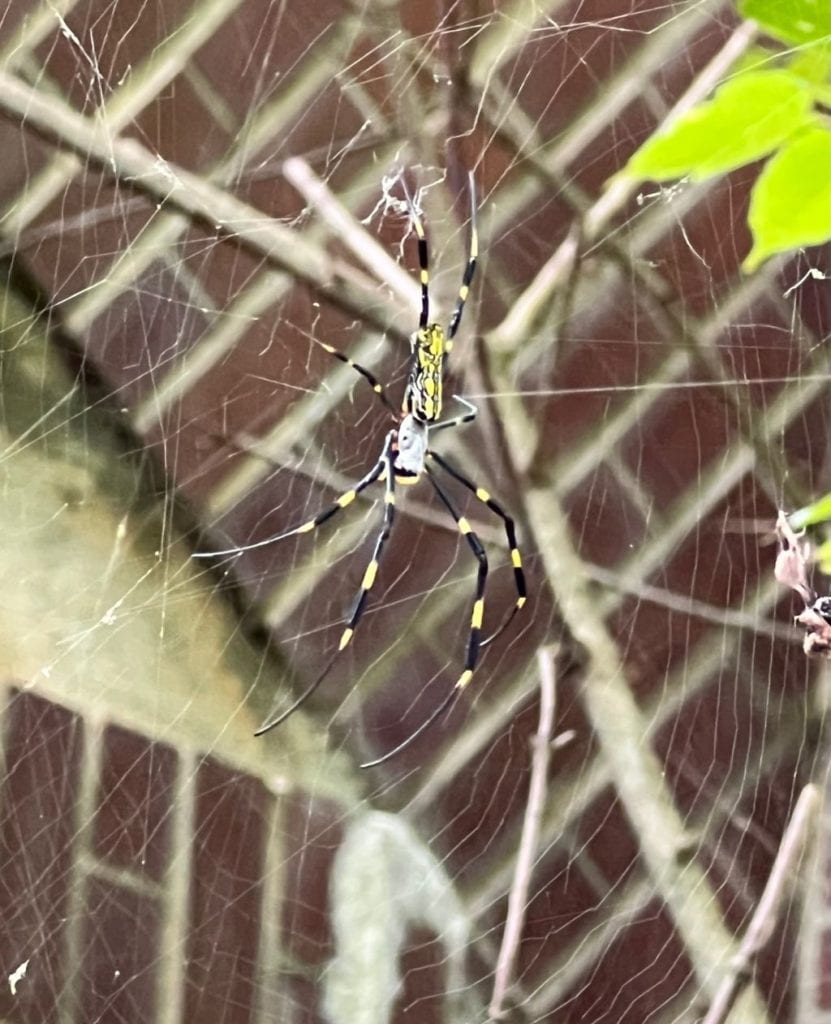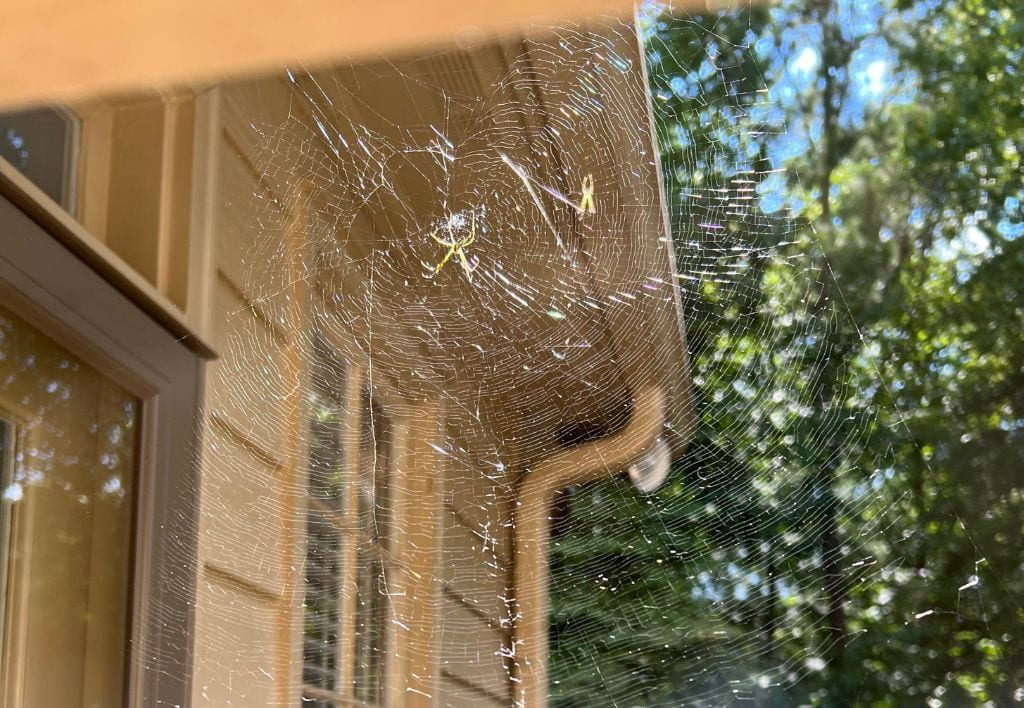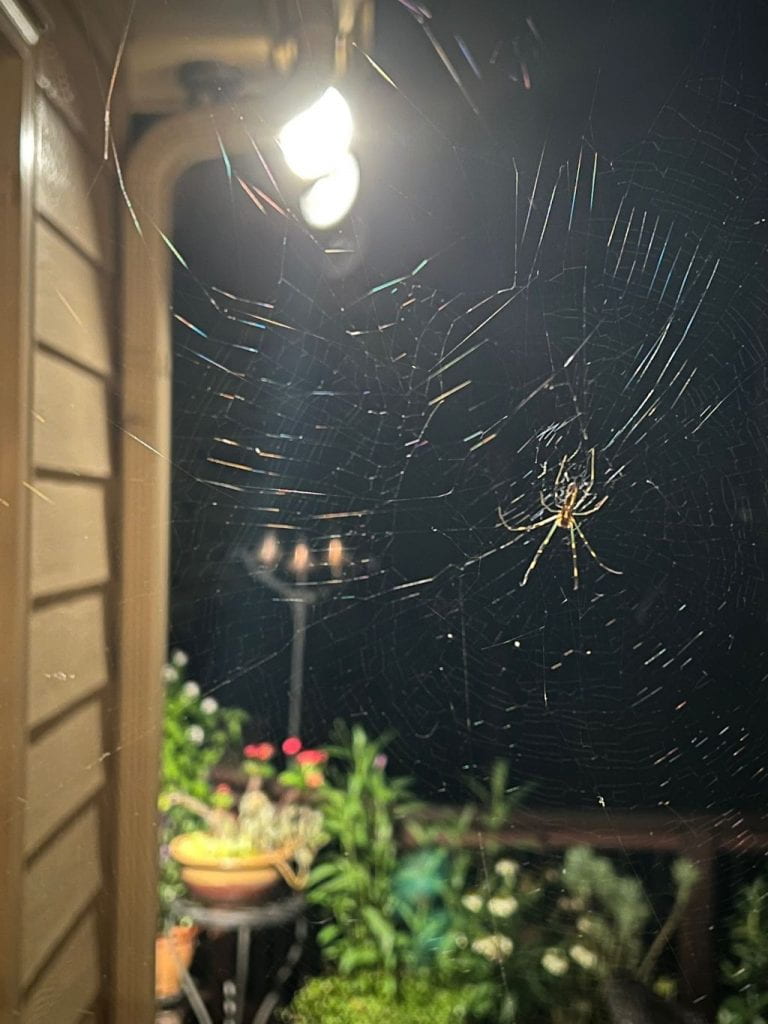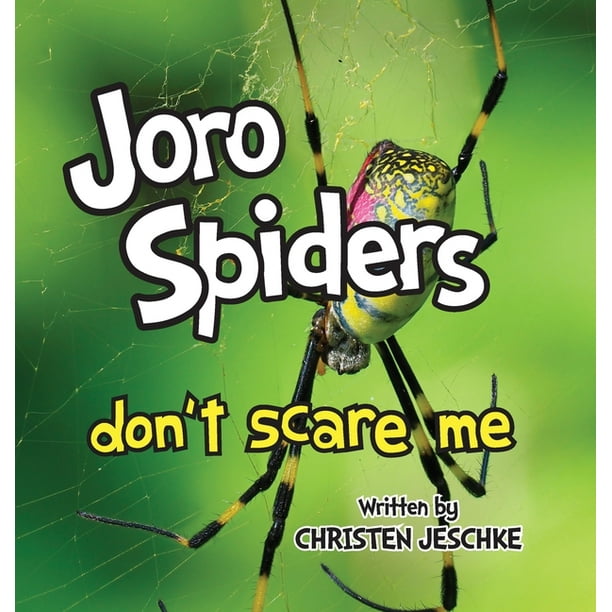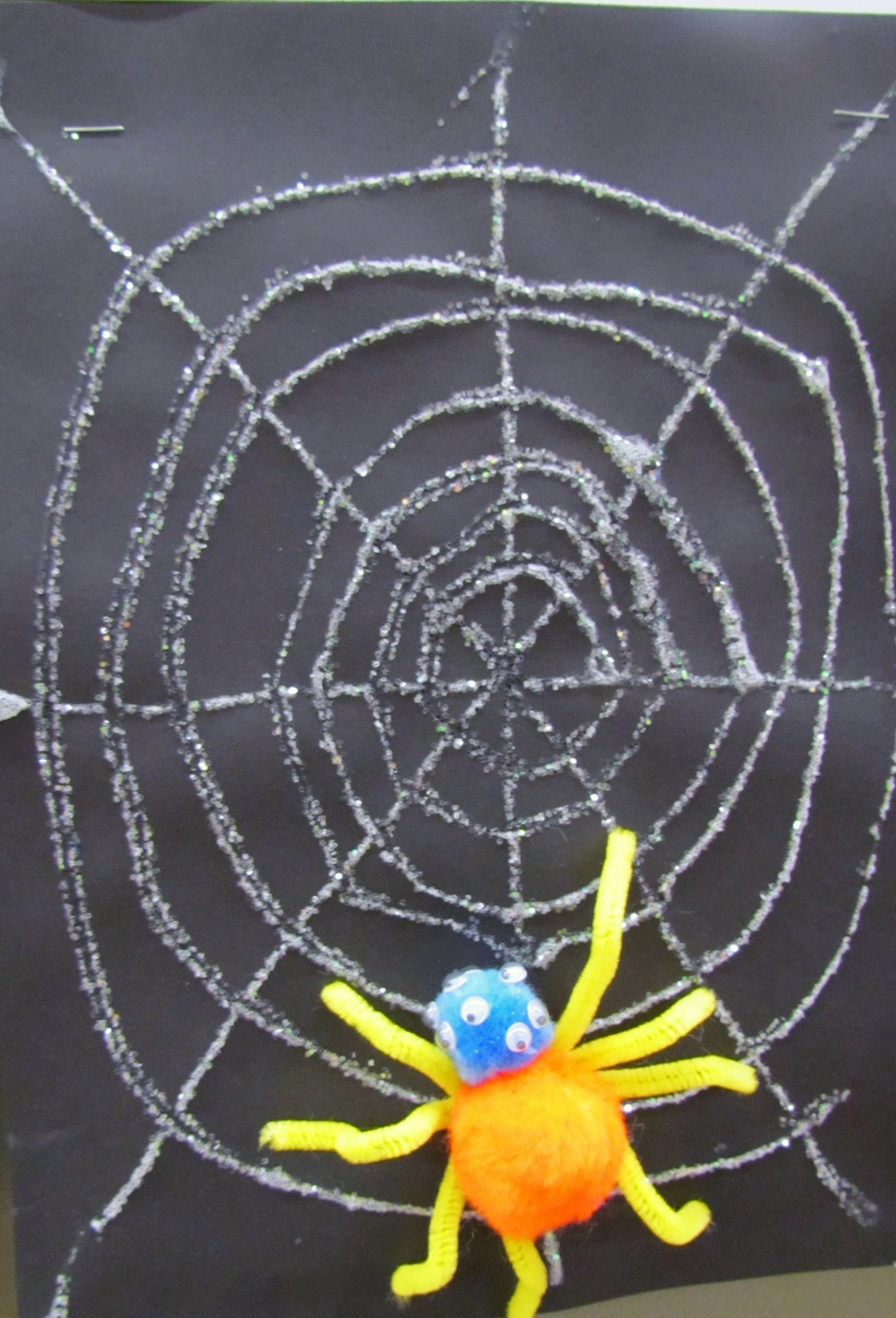More About Joro Spiders and Spider Labs
Joro spiders, an invasive species from Eastern Asia, made their appearance in Georgia in 2014. Adult females lay egg sacs containing hundreds of eggs between September and November and then die with the onset of freezing temperatures. Although the spiderlings hatch in the spring, they reach their mature size (three to four inches) by fall.
Their multi-dimensional webs weave the branches of the woodlands together.
One or more male Joro spiders may join the larger, more colorful female in her web.
Related Posts:
A Previous Post about Spiders (Includes art projects and videos.)
Go here to view full screen.
Watch this humorous book full screen here. It’s a great mentor text to introduce journal writing.
I made these cards for my K and PreK scientists to sequence the Itsy-Bitsy Spider song. Such a soft introduction to the water cycle.
The itsy bitsy spider went up the water spout.
Down came the rain and washed the spider out.
Out came the sun and dried up all the rain,
And the the itsy bitsy spider went up the spout again

